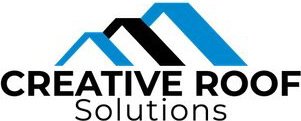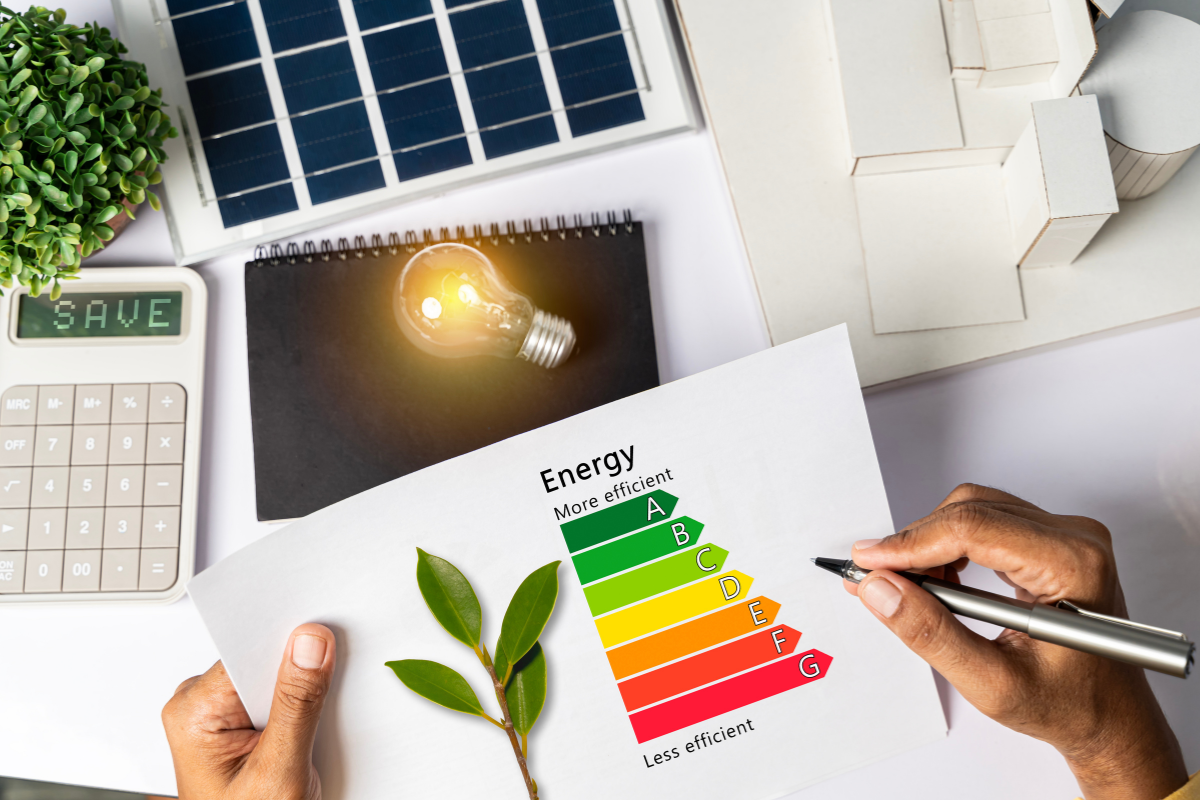The Role of Roof Insulation in Energy Efficiency
When we think about energy efficiency in the home, most of us focus on appliances, windows, or HVAC systems. But the truth is, much of your home’s energy loss—or retention—happens right over your head.
Roof insulation plays a key role in controlling temperature, reducing utility bills, and keeping indoor spaces comfortable year-round. In a climate like Washington’s, where cold winters and damp weather are common, proper insulation isn’t just a luxury—it’s a necessity.
Whether you’re installing a new roofing system or evaluating the performance of your existing one, understanding the role of insulation can help you make smarter, more cost-effective decisions for your home.
Introduction to Roof Insulation and Energy Efficiency
Roof insulation is any material placed in your attic or within the roofing system to slow the transfer of heat between the inside and outside of your home. Its primary function is to resist heat loss during the winter and heat gain during the summer.
Energy Efficiency in Residential Homes
Energy efficiency refers to using less energy to achieve the same level of heating or cooling comfort. Proper insulation reduces the load on your HVAC system, helping your home stay warmer in winter and cooler in summer—without overworking your furnace or air conditioner.
The Insulation Envelope
Roof insulation is a key part of the building envelope—the outer shell of your home that includes walls, windows, doors, and roofing. A poorly insulated roof compromises the entire structure’s efficiency, making it harder to maintain consistent temperatures and increasing energy waste.
Types of Roof Insulation Materials
Different insulation types offer unique advantages depending on your roof style, climate, and budget. Here are the most common options used in residential roofing systems:
Batt and Roll Insulation
Typically made from fiberglass or mineral wool
Comes in precut panels or long rolls
Commonly installed between ceiling joists in attics
Budget-friendly and easy to install, though it may not seal air gaps completely
Spray Foam Insulation
Expands to fill cavities and seal hard-to-reach areas
Offers high R-values and excellent air sealing
Ideal for complex roof shapes or cathedral ceilings
Professional installation is required due to precise application needs
Rigid Foam Board Insulation
Manufactured from materials like polystyrene, polyiso, or polyurethane
Delivers high thermal resistance per inch of thickness
Often used above or below the roof deck in flat or low-slope roofs
Provides excellent moisture resistance and durability
Each insulation type brings its own strengths, and selecting the right material depends on your home’s structure and climate. Creative Roof Solutions can help you determine the best insulation type for long-term energy performance.
Benefits of Proper Roof Insulation
When insulation is installed correctly and maintained over time, homeowners enjoy a range of comfort and financial benefits.
Lower Heating and Cooling Costs
One of the biggest advantages is reduced energy bills. By minimizing heat transfer through the roof, insulation decreases the workload on your furnace and air conditioner. Over time, this results in noticeable monthly savings.
Enhanced Indoor Temperature Regulation
Proper insulation helps maintain consistent temperatures throughout your home. That means fewer drafts in winter, less heat build-up in summer, and a more comfortable living space overall—especially in upper floors and attics.
Reduced Environmental Impact
Energy-efficient homes consume less power, which translates to lower carbon emissions. For homeowners interested in sustainability, insulation is a key strategy for reducing environmental impact while maintaining performance and comfort.
Energy Loss and Poor Insulation
Without proper roof insulation, your home becomes vulnerable to major energy inefficiencies—especially in the Pacific Northwest, where seasonal weather shifts can be extreme.
Common Signs of Insufficient Insulation
Uneven indoor temperatures, especially between floors
Ice dams forming on the roof during winter
High energy bills despite efficient appliances
Drafts or cold spots in upstairs rooms
Attic spaces that are excessively hot in summer or cold in winter
These signs often point to degraded, insufficient, or missing insulation in the roof or attic.
Heat Gain and Loss Through the Roof
The U.S. Department of Energy estimates that up to 25% of a home's heat loss occurs through the roof. Without a strong thermal barrier, warm air escapes in the winter and unwanted heat enters in the summer—forcing your HVAC system to work harder.
Seasonal Impact on Energy Consumption
In colder months, poor insulation leads to overuse of heating systems, while in summer, it contributes to overheating and high cooling costs. Addressing these gaps improves efficiency and protects your home year-round.
Climate-Specific Insulation Considerations for Washington State
The Pacific Northwest’s unique weather patterns call for insulation strategies that address not only temperature control but also moisture management.
Insulating for the Pacific Northwest Climate
Washington experiences cool, wet winters and mild but often humid summers. Insulation must perform consistently in a damp environment and be paired with proper ventilation to prevent mold and rot.
Moisture Management and Mold Prevention
Roof insulation in this region must account for moisture intrusion from both inside and outside the home. Vapor barriers and breathable underlayments are critical to keeping insulation dry and effective.
In high-moisture areas, fiberglass batts may need to be sealed with vapor retarders.
Spray foam insulation provides an air- and moisture-tight seal in tight attic spaces.
Insulation Code Requirements in Washington State
Washington State’s energy code requires minimum R-values in roof and attic assemblies, depending on your climate zone. In most areas of the state, attics must meet an R-value of R-49 or higher. When upgrading or replacing insulation, homeowners must meet these minimums to comply with current code.
For tailored recommendations, Creative Roof Solutions helps Washington homeowners navigate local building standards and energy performance goals.
Roofing Systems and Compatibility with Insulation
Different roofing systems require different insulation strategies. A “one-size-fits-all” approach won’t deliver long-term energy performance—especially in Washington’s variable weather conditions.
Pitched vs. Flat Roof Insulation Approaches
Pitched Roofs: Typically insulated at the attic floor with batts or blown-in insulation. If the attic is conditioned, spray foam or rigid board may be used directly under the roof deck.
Flat Roofs: Require continuous insulation installed above or below the roof deck. Rigid board insulation is often paired with a waterproof membrane to prevent moisture intrusion.
Ventilated vs. Unventilated Roof Structures
Ventilated Roofs: Feature soffit and ridge vents that allow airflow beneath the roof deck. Insulation must allow for ventilation space to prevent condensation.
Unventilated Roofs: Common with spray foam applications, these sealed systems require no airflow but must be airtight to prevent moisture buildup.
Compatibility with Roofing Materials
Shingle Roofs: Work well with attic insulation and standard ventilation systems.
Metal Roofs: Often require continuous insulation to prevent condensation under panels.
Tile Roofs: May require added underlayment protection in damp climates, with insulation applied either above or below the deck depending on slope.
Proper planning ensures your insulation supports—not undermines—your roofing system. During any roof replacement, Creative Roof Solutions ensures insulation is correctly matched to the materials and structure.
Building Codes and Energy Standards
Understanding insulation codes and standards is essential—both for energy savings and legal compliance.
Local and National Insulation Requirements
Washington State follows a strict version of the International Energy Conservation Code (IECC), which defines minimum insulation levels and construction practices for residential homes. This includes:
Minimum R-values for attics, ceilings, and roof assemblies
Requirements for air sealing and moisture control
Specific guidelines based on climate zone and home location
ENERGY STAR and LEED Compliance
ENERGY STAR®-certified homes use at least 10–20% less energy than standard homes. Proper roof insulation is a key factor in meeting those standards.
LEED (Leadership in Energy and Environmental Design) programs reward homes that meet advanced energy efficiency goals—often requiring higher insulation performance and sustainable materials.
Recent Code Updates
Washington has updated its energy codes in recent years to improve efficiency standards. For roofing projects, this means:
New R-value minimums in attic and cathedral ceiling insulation
Stricter moisture barrier requirements in damp regions
Tighter rules around ventilation and attic airflow
Working with an experienced local contractor ensures your insulation meets the most current regulations and avoids costly corrections down the line.
ROI and Long-Term Savings
Investing in high-quality roof insulation may come with upfront costs, but it delivers measurable savings and long-term value that make it one of the most cost-effective home improvements available.
Calculating Energy Savings Over Time
According to the U.S. Department of Energy, homeowners can save up to 15% on heating and cooling costs by properly insulating their homes, including attics and roofing systems. In climates like Washington’s—where both heating in winter and ventilation in summer are important—those savings can be even more substantial.
Upfront Cost vs. Utility Reduction
Insulation upgrades vary in cost depending on materials and the scope of work:
Blown-in or batt insulation: Often the most budget-friendly, with relatively quick ROI
Spray foam or rigid board: Higher installation costs, but greater long-term efficiency and air sealing
In most cases, homeowners see a payback period of 3 to 7 years through reduced utility bills—faster if paired with other roofing improvements or energy efficiency upgrades.
Additional Long-Term Value
Increased home resale value: Buyers increasingly prioritize energy-efficient homes
Reduced wear on HVAC systems: Lower strain leads to fewer breakdowns and longer equipment life
Improved comfort and air quality: Consistent temperatures and fewer drafts enhance livability
Installation Best Practices
Even the best insulation materials can underperform—or cause damage—if installed incorrectly. Proper installation techniques are essential for achieving optimal energy efficiency, moisture protection, and long-term durability.
Importance of Professional Installation
Roof insulation must be integrated with your ventilation system, vapor barriers, and roofing materials. DIY attempts or rushed installations can result in:
Air leaks
Trapped moisture
Insufficient R-values
Voided warranties
Hiring experienced professionals like Creative Roof Solutions ensures the job is done right and meets all code and performance standards.
Common Installation Mistakes to Avoid
Blocking soffit vents, restricting airflow
Leaving gaps or compressed insulation
Failing to address air leaks before insulating
Using the wrong type of insulation for the roof design
Role of Air Sealing and Ventilation
Before insulation is added, the attic should be sealed to stop conditioned air from escaping. Simultaneously, proper roof ventilation prevents moisture from becoming trapped under the roof deck—especially critical in damp regions like Western Washington.
Maintenance and Inspection of Roof Insulation
Even though insulation is largely “set it and forget it,” regular inspections and maintenance help ensure it continues to perform as intended—especially in Washington’s damp environment.
Signs Insulation May Need Replacing
Over time, insulation can become compressed, damp, or displaced. Watch for these signs:
Uneven indoor temperatures or sudden spikes in energy bills
Drafts or cold spots on the upper floor
Visible mold or mildew in attic spaces
Wet or sagging insulation material
Pest infestations in the attic or roof cavity
If any of these issues are present, your insulation may no longer be effective—and could be causing additional problems like moisture buildup or structural deterioration.
Inspection Tips for Homeowners
Look after extreme weather: Check for signs of water intrusion after heavy rain or wind.
Check insulation depth: The U.S. Department of Energy recommends at least 10–14 inches of attic insulation, depending on your climate zone.
Look for ventilation blockages: Make sure soffit or ridge vents aren’t clogged or covered.
When to Upgrade or Supplement Existing Insulation
If your insulation is more than 10–15 years old, or if your home consistently feels drafty, it may be time for a professional evaluation. Adding new layers over existing insulation, improving air sealing, or switching to higher-efficiency materials can offer major improvements.
Emerging Trends in Roof Insulation
Roof insulation is evolving quickly as homeowners and manufacturers prioritize energy performance, sustainability, and smart home integration.
Sustainable and Recycled Materials
Eco-conscious homeowners are turning to insulation made from:
Recycled denim or cotton
Cellulose (from recycled paper)
Natural wool or cork
These materials offer low environmental impact and good thermal performance, especially when paired with proper moisture management.
Smart Insulation Technologies
New technologies allow insulation to adapt or respond to environmental changes. Examples include:
Phase-change materials (PCMs): Store and release thermal energy to maintain stable temperatures
Thermal sensors or monitoring systems: Help homeowners track insulation effectiveness over time
Integrated moisture sensors: Alert you to leaks or saturation before visible damage occurs
Integration with Solar Roofing Systems
As solar roofing becomes more popular in Washington, pairing it with high-performance insulation ensures maximum energy savings. Properly insulated attics reduce the cooling load, helping solar systems run more efficiently by minimizing household energy demand.
Choosing the Right Insulation for Your Home
Every home has unique needs, and insulation choices should reflect your roof design, budget, energy goals, and local climate.
Assessing Current Insulation Performance
Start with an energy audit or attic inspection to determine if your existing insulation is up to par. Common issues may include:
Settled or compressed insulation
Inadequate R-values for your climate zone
Air leaks around vents, ducts, or recessed lighting
Signs of moisture damage or mold
If your insulation isn't performing, it may be time to consider an upgrade.
Matching Insulation to Roofing Type and Layout
For pitched roofs with attic space, batt or blown-in insulation may suffice.
For flat roofs or cathedral ceilings, spray foam or rigid board insulation is usually more effective.
For metal roofs, additional air sealing and condensation control may be necessary.
For homes with solar systems, high-performance insulation ensures maximum energy efficiency.
Working with a knowledgeable contractor can help you balance energy goals with compatibility and budget.
Consult the Pros
Not sure what you need? Creative Roof Solutions provides full-service roofing consultations, including insulation evaluations. Our team can help you choose the right insulation system for your roof type, climate, and long-term comfort.
Conclusion: Insulation That Protects, Performs, and Pays Off
Roof insulation plays a central role in creating an energy-efficient, comfortable home—especially in Washington’s damp and fluctuating climate. From reducing energy bills to preventing moisture damage, the right insulation system delivers long-term value that goes far beyond the attic.
Whether you're planning a full roof replacement or simply looking to upgrade your current insulation, it pays to work with a contractor who understands how roofing and insulation work together. Creative Roof Solutions offers expert guidance, installation, and maintenance to help you build a roof system that performs year-round.
Schedule your consultation today and take the first step toward greater comfort and efficiency.




